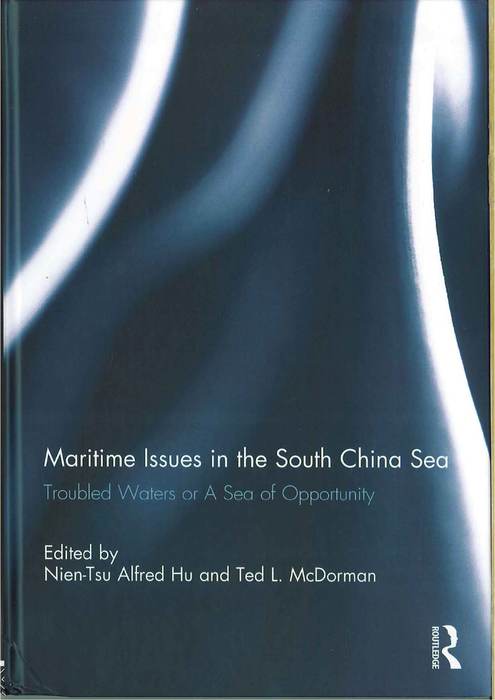Nien-Tsu Alfred Hu and Ted L. McDorman, "Post-2009: An Overview of Recent Developments Concerning the South China Sea" in Hu and McDorman, eds., Maritime Issues in the South China Sea, Oxon, UK: Routledge, 2013, pp. 155-173
Abstract
There is no question that the conflicting claims to islands and ocean areas within the South China Sea has dominated almost all discussions and undermined most attempts at regional cooperation on marine matters in the South China Sea. The bases of the legal/political arguments for the claims of Brunei, China (People's Republic of China and the Republic of China), Malaysia, the Philippines and Vietnam over the islands and ocean areas within the South China Sea, whether it be historic usage, discovery, occupation, proximity or a combination of these and other arguments, are well-known. The activities of the various actors respecting the islands and ocean areas have been extensively documented and analyzed. It is widely acknowledged that the 2002 Declaration on the Conduct of the Parties in the South China Sea involving the Association of South East Asian Nations (ASEAN) and the People's Republic of China has had a stabilizing effect on State actions within the South China Sea without, however, yielding much beyond a maintenance of the status quo respecting the conflicting ocean and insular claims. Subsequent to the Declaration there have been activities and statements that have provoked protests over interference with sovereignty and that the activity/statement is straying from the principles in the Declaration. The South China Sea situation is further complicated by the interactions between the" two Chinas"-the People's Republic of China (PRC) and the Republic of China (ROC or Taiwan). While there has been a congruence of position across the Taiwan Strait on the South China Sea matters, Taiwan is an actor in the South China Sea, if for no other reason, that it occupies the largest of the Spratly Islands-Itu Aba or the Tai-Ping Island. Since the commencement in 2008 of Ma Ying-Jeou's Presidency, there has been a generally amicable political atmosphere across the Taiwan Strait. This has led to the PRC and Taiwan engaging in unprecedented levels of cooperation on the South China Sea issues, such as, a jointly proposed program of activity in a regional, multilateral, second-track forum (namely, the Workshops on Managing Potential Conflicts in the South China Sea), a jointly published regional situation assessment report through a bilateral mechanism, and confidence building measures informally proposed by various scholars from both sides.
Apart from the intra- and extra-regional State actors that have shaped the situation in the South China Sea region, a non-State body, the Commission on the Limits of the Continental Shelf(CLCS) has also influenced recent developments in the region. While States understand that the CLCS is not a forum to settle disputes involving maritime claims and/or delimitation between or among States, it is inevitable that in their submissions to the CLCS that States have asserted and accentuated claims that may overlap with claims of other States. This has happened in the South China Sea.
This chapter provides information on new developments as well as a legal and policy overview analysis regarding South China Sea issues that have arisen subsequent to the writing and publication of the other chapters in this collection which was published in the Special Issue of Ocean Development and International Law entitled "Issues in the South China Sea" in mid-2010.

瀏覽數:
分享
